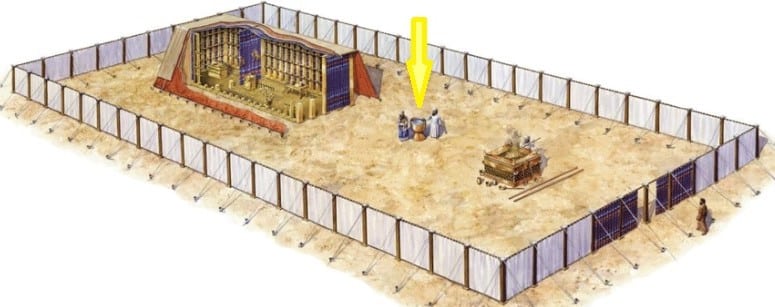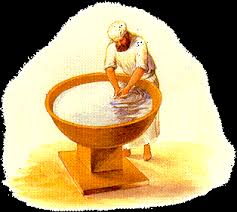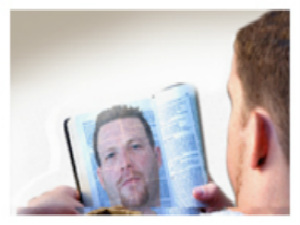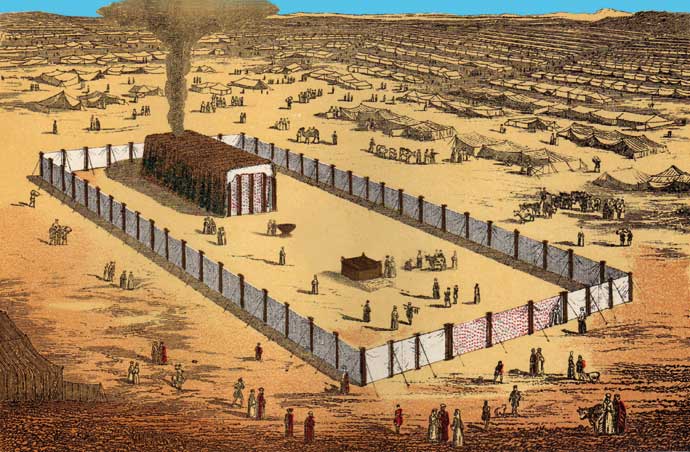It’s been a few weeks since we started this introductory 101 study of the Old Testament Tabernacle – we’re calling it: Loving Christ More Thru the Tabernacle Study. So, in case you have forgotten why we are bothering to study the ancient tabernacle, let’s recall its purpose:
“That I may dwell among them” Exodus 25:8
“The Tabernacle was God’s first dwelling-place on earth. He walked in the company of Adam in Eden. He visited Abraham at Mamre but He had no dwelling-place there. At the completion of the Tabernacle, He came down to dwell with His redeemed people, and from then on He will have a dwelling-place on earth. After the Tabernacle, God dwelt in the Temple in the land (2 Chronicles 6:3-6). Then the Word became flesh and tabernacled among us (John 1:14), when the Son of God came to earth to dwell among men.” (1)
Since the cross, in our age of grace, we know that the moment we trusted Christ as our Saviour, God, in the Person of the Holy Spirit came to dwell inside us – so that our bodies are individually called a temple (1Corinthians 6:19). A community or assembly of believers, in any given area, is also called a temple where God dwells (Matthew 18:20, 1Corinthians 3:16). And finally, in the future we read: “the Tabernacle of God” will be with men and “He will dwell with them and they shall be His people” (Revelation 21:3).
That’s the little refresher on the significance of the Tabernacle in the Bible.
Moving in Further
In this lesson, we move further into the courtyard of the Tabernacle. Earlier, we came to the east side and entered through the only gate. Immediately we came to the bronze altar of sacrifice, where we laid our hands on the animal we brought for sacrifice and then it was consumed by fire. Reflecting on these things, we thanked the Lord Jesus for being the one sacrifice for sins forever, and by Him, we have been brought inside. By Him, we have constant access to God and fellowship with Him (1 Peter 3:18). In fact, every Christian is a ‘priest,’ and our Great High Priest is Christ. We don’t need any earthly priests or mediators or go-betweens to come to God; we ourselves are priests. Yes, you!
“You also, as living stones, are being built up a spiritual house, a holy priesthood, to offer up spiritual sacrifices acceptable to God through Jesus Christ … But you are a chosen generation, a royal priesthood, a holy nation, His own special people, that you may proclaim the praises of Him who called you out of darkness into His marvelous light” (1 Peter 2:5-9).
Why talk about priests at this point in our studies? Because once an Israelite had his lamb sacrificed on the Bronze Altar, he could go no further. He had to leave. The Levite priests performed the rest of the steps on behalf of the people. The priests were required to wash at the Bronze Laver or Basin before doing any of the duties required in the job description of a priest.

The LORD said to Moses, “You shall also make a basin of bronze, with its stand of bronze, for washing. You shall put it between the tent of meeting and the altar, and you shall put water in it, with which Aaron and his sons shall wash their hands and their feet. When they go into the tent of meeting, or when they come near the altar to minister, to burn a food offering to the LORD, they shall wash with water, so that they may not die. They shall wash their hands and their feet, so that they may not die. It shall be a statute forever to them, even to him and to his offspring throughout their generations.” Exodus 30:17-22 ESV
Unlike the other parts of the tabernacle, no measurements were given for this wash basin. That’s why you’ll see variations in the artwork – depending on the artist. You can speculate as to the significance of the absence of dimensions. Perhaps it reminds us of the limitless cleansing power of God.
Exodus 38:8 tells us the wash basin was made out of shiny bronze mirrors donated by the women – the basin itself and the stand. We’ve already learned that bronze speaks to us of a Holy God who judges sin. Jesus, talking to Nicodemus, compared the bronze serpent lifted up on a pole (Numbers 21:9) to Himself – lifted up on the Cross as the only way of salvation. The fires of God’s judgment for sin fell on Christ. (2Corinthians 5:21)
 This bronze laver was for purification – for cleansing. The priests had to be constantly washing at this basin as they did their spiritual duties throughout the day. Dirt and dust on their hands and feet from walking around the dirt floor was totally unacceptable as they served the Lord. All the defilement that clung to their bodies had to be washed off.
This bronze laver was for purification – for cleansing. The priests had to be constantly washing at this basin as they did their spiritual duties throughout the day. Dirt and dust on their hands and feet from walking around the dirt floor was totally unacceptable as they served the Lord. All the defilement that clung to their bodies had to be washed off.
Interestingly, we don’t see Christ directly represented in the bronze laver – because He was never defiled or contaminated by sin. He mixed and mingled with the worst of sinners, but He Himself was never tainted by sin. (2Corinthians 5:21, 1Peter 2:22, 1John 3:5) These are important verses to memorize. The absolute sinless perfection of Jesus Christ.
There are two Bible terms to introduce here: justification and sanctification. In the bronze altar, we appreciate our justification. The moment we trust Christ’s work on the cross on our behalf, we are declared righteous by God (Romans 4:24-25). It’s all done on our behalf – we don’t do it. Freely, by the grace of God, our guilt and punishment of sin are removed, and the righteousness of Christ is imputed to us, and we enjoy fellowship with God. That’s justification!
The Bronze Laver represents a Christian’s sanctification – which just means set apart to serve the Lord. But we must be clean to serve the Lord. In John 15:3, Jesus said to His disciples: “You are already clean because of the Word I have spoken.” When Jesus was praying to His Father in John 17:17, He prayed: “Sanctify them by the truth; Your Word is truth.”
There are three ways to think about sanctification:
You ‘stand’ before God accepted in Christ. This position or standing is based on what Christ did for you – not what you do for Christ.
- Positional Sanctification – the moment you trusted Christ, you were eternally sanctified to God. The record, the guilt and the penalty of your sin are removed forever. You ‘stand’ before God accepted in Christ. This position or standing is based on what Christ did for you – not what you do for Christ.
- Practical Sanctification – every day, as you walk with Christ before God, you need to be cleansed from the defilement of the world and your sinful flesh. The dust and dirt of sin are washed away at the Bronze Laver of the Word of God. The Psalmist asked: “how can a young person cleanse his way?” The answer was: through constantly adjusting and aligning his behaviour to the Word of God (Psalm 119: 9-11). We progress in our practical sanctification as we apply the Word of God to our lives each day. (2Timothy 2:19-21; 2Peter 3:18)
- Perfected Sanctification – When we are at home with the Lord, we will be fully conformed to the image of Jesus Christ and we shall be morally like Him (1 John 3:2) – never to be defiled or contaminated by sin again! Praise the Lord!!
When the priests washed at the laver – they would see themselves reflected (bronze mirror construction).  When we read our Bible, we see ourselves more clearly. (Hebrews 4:12, James 1:23-25). Daily we need to judge ourselves (bronze) in God’s Presence with our open Bible. “The Word of God, appropriated and properly applied, prevents us from falling into sin, keeps us in our walk before the Lord, and makes our fellowship sweet in Him.” (2)
When we read our Bible, we see ourselves more clearly. (Hebrews 4:12, James 1:23-25). Daily we need to judge ourselves (bronze) in God’s Presence with our open Bible. “The Word of God, appropriated and properly applied, prevents us from falling into sin, keeps us in our walk before the Lord, and makes our fellowship sweet in Him.” (2)
David wrote about those who were prepared to serve in God’s Holy presence. People with clean hands and a pure hearts. (Psalm 24:3-4) As the priests washed their hands and feet at the bronze laver, they could walk away cleansed – “…prepared to enter the holy place for communion with a holy God. We who are cleansed in our walk before God are prepared to do the same thing.” (3) ibid. p.34
Our next lesson will take us again directly to symbolism that will point us to Christ and cause us to worship. We will be moving into the Holy Place.
P.S. If you would like to download the diagram of the Tabernacle Layout and fill in the blanks, click here and print it off.
Sources:
- http://www.truthandtidings.com/issues/2004/t20040102.php
- Levy, David M. Levy, The Tabernacle, Kregel Publications, p.34
- ibid p.34


Not Psalm 23:3-4 but 24:3-4
Thank you so much. Correction made. Thank you
Thanks. Very good thoughts, Peter. I love studying the Tabernacle.
The Laver (mirror & word of God) for cleansing connected our worship (appreciation and gratitude) to God (bronze altar) and our service (in the holy place) for God.